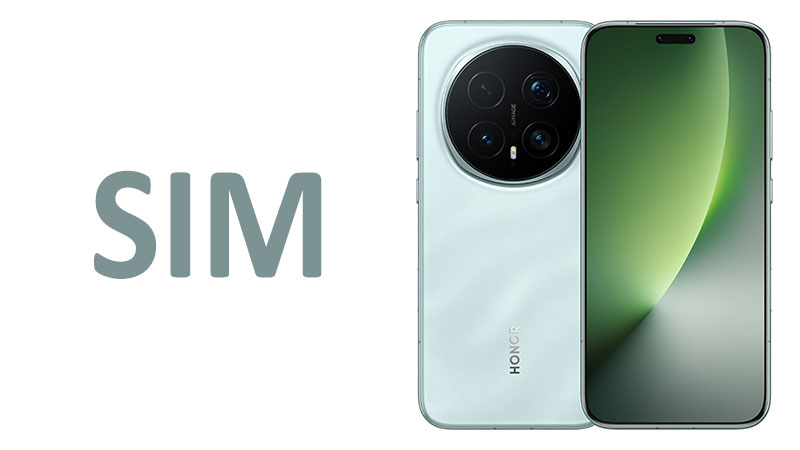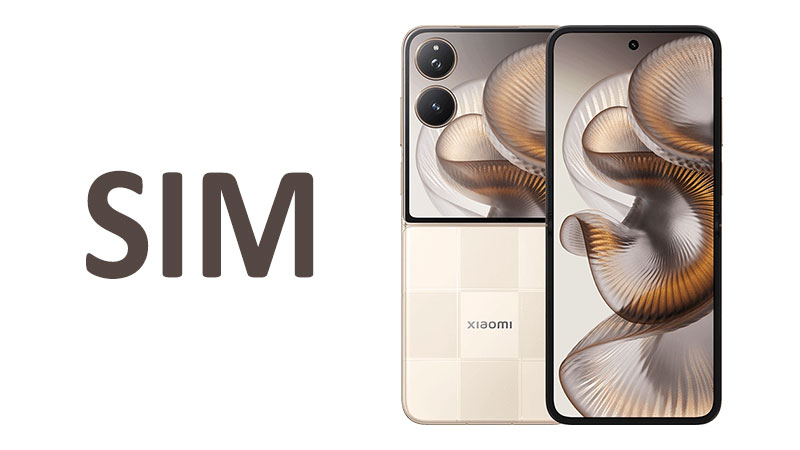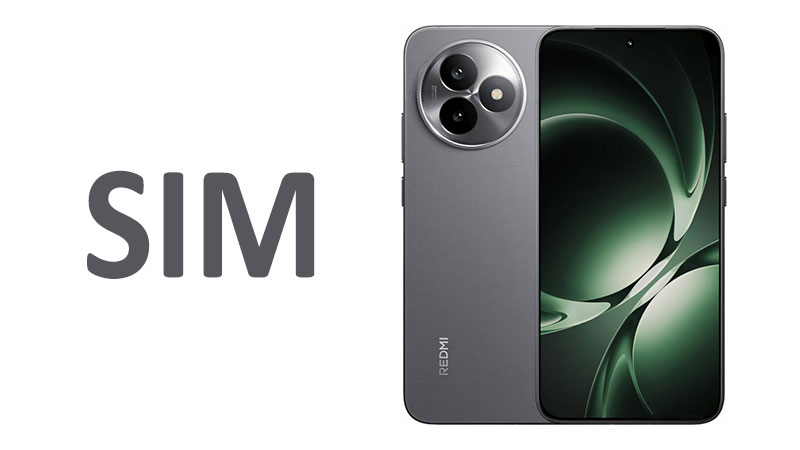The Honor Magic 8 SIM configuration is a critical factor for global users. Understanding its dual-SIM functionality and advanced connectivity is essential. This flagship device sets a new benchmark for mobile communications. It provides users with blazing-fast speeds and extensive network compatibility. This comprehensive review dives deep into every connectivity specification. We examine how the Honor Magic 8 truly performs in the modern mobile landscape.
The Dual-SIM Architecture: Nano-SIM + Nano-SIM
The Honor Magic 8 supports a traditional dual physical SIM setup. Specifically, it uses a Nano-SIM + Nano-SIM configuration. This means the device accommodates two separate physical subscriber identity modules. Users can easily manage two different phone numbers or plans simultaneously. This flexibility is perfect for travelers or professionals. They can separate work and personal lines easily. The use of the standard Nano-SIM format ensures broad compatibility with existing carrier cards.
Specialized Comparison: Physical SIM vs. eSIM
The Nano-SIM + Nano-SIM design differs from the modern eSIM trend. Many current flagships offer a hybrid or eSIM support. An eSIM provides greater convenience and saves physical space. However, physical SIMs still offer distinct advantages. They are easier to swap between devices. Furthermore, they require no digital provisioning from the carrier. The Honor Magic 8 prioritizes the tangible flexibility of two physical cards. This is a practical choice for many consumers worldwide. This configuration also avoids any eSIM compatibility issues with certain regional carriers.
Pros and Cons of the Nano-SIM Setup
This dual physical SIM approach has clear benefits.
Pros
- It offers universal plug-and-play simplicity.
- Users maintain easy physical control over their accounts.
- It eliminates potential carrier support problems for digital SIMs.
- Travelers can purchase local SIMs immediately upon arrival.
- It allows for two independent, active cellular connections.
Cons
- It uses a traditional design, lacking the slim benefits of eSIM.
- The SIM tray occupies internal space within the device.
- Losing the physical SIM card requires a replacement from the carrier.
- The user cannot use a microSD card for storage expansion. The SIM slot is only for SIM cards.
Important Points for the Buyer
Potential buyers must understand the flexibility this setup offers. The Nano-SIM + Nano-SIM configuration is ideal for managing multiple networks. You can run one line for data and another for voice calls. This is invaluable for optimising monthly phone bills. This setup ensures that your device is ready for any market. It supports immediate use of local carrier services without delay. The physical dual-SIM capability remains a powerful selling point. This is especially true for those needing continuous, flexible coverage.
Cellular Connectivity: The 5G Powerhouse
The Honor Magic 8 supports a wide array of cellular technologies. This ensures seamless network access across the globe. The supported technologies include GSM, HSPA, LTE, and the flagship feature: 5G. This full spectrum of compatibility guarantees connectivity everywhere. It future-proofs the device against upcoming network migrations. The inclusion of 5G makes the device a performance leader.
5G Technology and Performance
The presence of 5G support is the most significant specification here. Fifth-generation technology allows for ultra-fast download and upload speeds. It dramatically reduces latency compared to 4G LTE networks. This makes the Honor Magic 8 excellent for high-demand tasks. These tasks include cloud gaming and high-definition streaming. The device likely supports multiple 5G bands. This improves coverage and performance in dense urban environments. It also ensures compatibility with global 5G rollouts.
Specialized Comparison: 5G Implementation
Compared to earlier 5G models, the Honor Magic 8 offers refined performance. It leverages advanced modem technology. This helps to improve power efficiency while maintaining high speeds. Earlier generations of 5G chipsets sometimes suffered from overheating. They also exhibited high power draw during intensive data use. The Magic 8 is built on a more mature, efficient platform. This delivers a more stable and reliable 5G user experience. Furthermore, the dual-SIM capability allows simultaneous standby on both 5G networks. This means both phone numbers can receive 5G signals where available.
Buyer Considerations for Cellular Use
A buyer should know that 5G speeds depend heavily on carrier availability. The phone can handle the speed, but the network must deliver it. The vast array of supported bands provides great insurance. It means the phone will connect well even in remote areas. The smooth transition between 5G, LTE, and HSPA is crucial. This maintains consistent service quality during travel or network handoffs. The full technological stack promises world-class cellular performance.
Wi-Fi Standard: Wi-Fi 7 and Beyond
The Honor Magic 8 is equipped with cutting-edge Wi-Fi capabilities. It supports Wi-Fi 802.11 a/b/g/n/ac/6/7. The inclusion of Wi-Fi 7 (802.11be) is a huge leap forward. This specification positions the device at the very forefront of wireless technology. It allows for unprecedented data throughput and network efficiency.
Decoding the Wi-Fi Specifications
The phone supports all previous Wi-Fi standards for backward compatibility.
- Wi-Fi 5 (802.11ac): A solid baseline for modern connections.
- Wi-Fi 6 (802.11ax): Greatly improves efficiency in congested environments.
- Wi-Fi 7 (802.11be): This is the key feature, offering Multi-Link Operation (MLO). MLO allows the device to use multiple frequency bands simultaneously. This results in significantly faster speeds and lower latency. The device can communicate over the 2.4 GHz, 5 GHz, and 6 GHz bands at the same time.
The device also supports dual-band operation and Wi-Fi Direct. Dual-band means it can connect to both 2.4 GHz and 5 GHz networks. Wi-Fi Direct enables direct peer-to-peer connections. This is useful for file sharing without needing an access point. The inclusion of Wi-Fi 7 is the defining feature.
Specialized Comparison: Wi-Fi 7 vs. Wi-Fi 6E
Many competing flagships currently top out at Wi-Fi 6E. Wi-Fi 6E introduces the 6 GHz band, which significantly reduces congestion. However, Wi-Fi 7 goes further than this. It leverages advanced techniques like 4096-QAM modulation. It also employs Preamble Puncturing for greater spectral efficiency. This translates to peak theoretical speeds roughly five times faster than Wi-Fi 6. The Honor Magic 8 offers superior performance in a future-ready network environment. Users with a Wi-Fi 7 router will immediately notice the difference.
Pros and Cons of Advanced Wi-Fi
The use of Wi-Fi 7 carries substantial performance benefits.
Pros
- It provides future-proof connectivity for several years.
- Speeds can exceed 10 Gbps under optimal conditions.
- Latency is ultra-low, perfect for real-time applications.
- MLO ensures connection stability and reliability.
Cons
- Requires a separate Wi-Fi 7 router to maximize benefits.
- The router ecosystem is still in its infancy.
- The full 6 GHz band may face regulatory restrictions in some regions.
- High bandwidth usage could potentially increase battery drain.
Buyer Considerations for Wi-Fi
Buyers should view the Wi-Fi 7 inclusion as an investment. Even if you do not own a Wi-Fi 7 router today, you are prepared for tomorrow. The speed and efficiency gains are transformative. Gamers and heavy media consumers will value the low latency. Furthermore, the dual-band support guarantees compatibility with all older existing networks. This is essential for public Wi-Fi spots and older home routers.
Bluetooth 6.0: The Audio Revolution
The Honor Magic 8 features the latest Bluetooth 6.0 standard. This marks a significant upgrade over the common Bluetooth 5.x found in many competing devices. Bluetooth 6.0 offers faster data transfer rates and improved energy efficiency. It also introduces several key technologies focused heavily on audio quality and connectivity.
The New Bluetooth 6.0 Standard
Bluetooth 6.0 provides enhanced range and stability. It builds upon the efficiency gains of the Low Energy (LE) standard. The new standard improves data security and reduces connection dropouts. This ensures a flawless wireless experience with peripherals. The technology is perfect for both simple accessories and complex audio devices.
Advanced Audio Codec Support
The device supports an impressive suite of high-definition audio codecs. This ensures the best possible wireless sound quality.
- aptX HD, aptX Adaptive, aptX Lossless: This family of codecs from Qualcomm provides scalable quality. Lossless ensures CD-quality audio transmission wirelessly. Adaptive dynamically adjusts the bitrate to maintain stability.
- LHDC 5: Another high-resolution audio codec offering pristine sound quality.
- Auracast: This innovative feature transforms audio sharing. It allows a single device to broadcast audio to multiple compatible headphones simultaneously. This is ideal for shared movie watching or group listening sessions.
- ASHA (Audio Streaming for Hearing Aids): This critical inclusion ensures accessibility. It allows for direct, low-energy audio streaming to compatible hearing aids. This is an important step towards inclusive technology.
Specialized Comparison: Bluetooth 6.0 vs. 5.3
The leap from Bluetooth 5.3 to 6.0 is substantial, especially for audio. Bluetooth 5.3 devices support some high-quality codecs. However, the combination of Bluetooth 6.0, Auracast, and the entire suite of Lossless/LHDC 5 codecs is rare. The Honor Magic 8 focuses intensely on audio transmission quality. Auracast is the standout feature. It changes the way people share audio experiences. This capability is unavailable on older Bluetooth standards.
Pros and Cons of Advanced Bluetooth
The robust Bluetooth 6.0 setup benefits users focused on audio fidelity and accessibility.
Pros
- It offers exceptional audio quality with Lossless support.
- Auracast enables easy, simultaneous audio sharing.
- ASHA integration provides better accessibility for hearing aid users.
- Improved energy efficiency extends the battery life of connected accessories.
- Faster pairing and more stable connection with all devices.
Cons
- Requires compatible Bluetooth 6.0 peripherals to realize full benefits.
- Auracast adoption in third-party accessories is still growing.
- The extensive codec support can sometimes complicate initial setup.
- High-bitrate audio streaming requires more bandwidth.
Buyer Considerations for Bluetooth
Music enthusiasts and audiophiles should pay close attention to this section. The support for Lossless and HD codecs is a major selling point. If you use premium wireless headphones, the Honor Magic 8 ensures you get the best sound. The inclusion of Auracast is a feature with immense social potential. It adds value beyond basic connectivity. The ASHA support demonstrates a commitment to broader user needs.
Advanced Global Positioning Systems (GNSS)
Precise location tracking is crucial for navigation and location-based services. The Honor Magic 8 features an incredibly robust Global Navigation Satellite System (GNSS) setup. This array of technologies ensures unparalleled accuracy anywhere in the world.
A Multitude of Satellite Systems
The device supports a comprehensive list of global and regional systems:
- GPS (L1+L5): The widely used US system, featuring dual-band support.
- BDS (B1I+B1c+B2a+B2b): China’s BeiDou Navigation Satellite System.
- GALILEO (E1+E5a+E5b): Europe’s global navigation system.
- QZSS (L1+L5): Japan’s Quasi-Zenith Satellite System, also with dual-band.
- NavIC (L1+L5): India’s regional navigation system, also with dual-band.
- GLONASS: Russia’s global navigation satellite system.
The sheer number of supported systems improves reliability and accuracy. More satellites visible means a faster lock and better signal integrity.
The Importance of Dual-Band (L1+L5) Positioning
The dual-band support is arguably the most important positioning detail. Traditional GPS uses the L1 frequency. The Honor Magic 8 also utilizes the L5 frequency. The L5 signal is more resilient to environmental interference. It also provides greater accuracy in challenging urban canyons or dense forests. This dual-frequency capability significantly reduces location error. It also enhances the speed of the initial position fix. This feature is essential for serious hikers, cyclists, and urban navigators.
Specialized Comparison: GNSS Accuracy
Older or budget devices often only support single-band GPS and perhaps GLONASS. The Honor Magic 8’s extensive, multi-constellation, multi-band support is a major advantage. It provides centimeter-level accuracy in ideal conditions. This level of precision is superior to that of single-band competitors. It ensures navigation remains reliable even when the sky is obscured.
Buyer Considerations for Positioning
If you rely on your phone for precise directions, this is a key feature. Dual-band GNSS drastically improves reliability for delivery drivers and outdoor enthusiasts. It minimizes the frustration of inaccurate location pins. The global support ensures seamless navigation across all continents. This feature is necessary for any high-end device claiming global capability.
Peripheral Connectivity: NFC, IR, and USB
Beyond wireless radio frequencies, the Honor Magic 8 offers excellent peripheral features. It includes Near Field Communication (NFC), an Infrared port, and a modern USB connection. These features enhance utility for payments, control, and data transfer.
NFC: Contactless Payments and Pairing
The device includes NFC functionality. This enables contactless payment services like mobile wallets. Users can securely tap their phone to pay at compatible terminals. NFC also simplifies pairing with other devices. For instance, you can tap to connect with NFC-enabled speakers or headphones. This is now a standard, essential feature for daily life. Its presence guarantees modern convenience for transactions.
Infrared Port: The Universal Remote
The inclusion of an Infrared (IR) port is a thoughtful addition. Many modern flagships omit this feature. The IR port turns the Honor Magic 8 into a universal remote control. Users can easily operate TVs, air conditioners, and stereos. This ability is incredibly convenient in many smart homes and hotel rooms. It adds significant practical utility to the device.
USB Type-C 2.0 and DisplayPort 1.2
The physical connection uses a USB Type-C 2.0 port. While USB 2.0 is not the fastest standard for data transfer, it is highly functional. More importantly, the port also supports DisplayPort 1.2.
- DisplayPort 1.2: This allows the phone to output high-resolution video directly to an external monitor or TV. This feature is perfect for presentations or desktop-like experiences. Users can utilize the phone’s power to drive a large screen display. This significantly enhances the device’s productivity potential.
- OTG (On-The-Go): OTG support means the phone can act as a host. You can connect peripherals like keyboards, mice, or flash drives directly to the phone. This adds a layer of PC-like functionality.
Missing Feature: Radio
The specifications confirm that the Honor Magic 8 lacks an integrated FM Radio. While many users stream music, some still prefer local FM Radio. This is a minor drawback for listeners who rely on traditional radio broadcasts. However, it aligns with a general industry trend to exclude this feature.
Buyer Considerations for Peripherals
The DisplayPort 1.2 is a major value-add for power users. It effectively allows for a mobile desktop experience. The IR blaster gives the phone an advantage over competitors without one. NFC ensures your mobile payment capabilities are up-to-date and secure. These peripheral features complete the device’s connectivity profile. They make the phone highly versatile in various environments.
Comprehensive Pros and Cons Summary
After reviewing all connectivity aspects, we can summarize the device’s strengths and weaknesses. This helps the reader gain a clear perspective on the full package.
Overall Connectivity Pros
- It supports cutting-edge 5G and future-ready Wi-Fi 7.
- The dual-band GNSS (L1+L5) delivers superior location accuracy.
- Bluetooth 6.0 and its codecs offer professional-grade wireless audio.
- The Nano-SIM x 2 configuration provides maximum physical flexibility.
- DisplayPort 1.2 enables desktop-style video output to external screens.
- The inclusion of an Infrared port adds useful remote control capability.
- ASHA support makes the device highly accessible for users with hearing aids.
Overall Connectivity Cons
- The USB port is only Type-C 2.0, not the faster 3.x or 4 standard.
- The absence of an eSIM option may disappoint digital-first consumers.
- The device does not include an integrated FM radio receiver.
- To fully utilize Wi-Fi 7, users must purchase new, compatible routers.
Conclusion: Making an Informed Decision
The Honor Magic 8 SIM and connectivity review clearly shows a focus on premium performance. The device is future-proofed with 5G, Wi-Fi 7, and Bluetooth 6.0. The Nano-SIM + Nano-SIM setup offers unmatched practical flexibility for global users. Furthermore, the combination of dual-band GPS and DisplayPort support enhances utility and precision. While the USB speed is standard and FM radio is absent, these are minor compromises. The massive leap in audio, network speed, and location services makes the Honor Magic 8 an outstanding choice. This phone excels for power users, audiophiles, and international travelers. We recommend this device to anyone prioritizing stable, high-speed, and accessible global connectivity.
Frequently Asked Questions (FAQ)
1. Does the Honor Magic 8 support eSIM functionality?
No, the Honor Magic 8 does not support eSIM. It features a standard dual physical SIM configuration. This configuration uses two Nano-SIM cards simultaneously.
2. Is Wi-Fi 7 support truly beneficial right now?
Yes, Wi-Fi 7 is beneficial even if you do not have a compatible router. It future-proofs the device for when Wi-Fi 7 becomes standard. It still offers enhanced performance on older Wi-Fi 6 networks.
3. What is the main advantage of the dual-band GPS (L1+L5)?
The main advantage is significantly improved location accuracy and reliability. The L5 frequency signal reduces reflection errors. This is crucial for navigation in dense urban areas or near tall buildings.
4. Can I use the Honor Magic 8 as a TV remote control?
Yes, you can use it as a TV remote control. The device includes an Infrared (IR) port. This allows it to act as a universal remote for various household appliances.
5. What are the key audio features of the Bluetooth 6.0 connection?
Key audio features include support for aptX Lossless and LHDC 5 codecs. It also features Auracast technology. Auracast lets the phone broadcast audio to multiple users at once.



